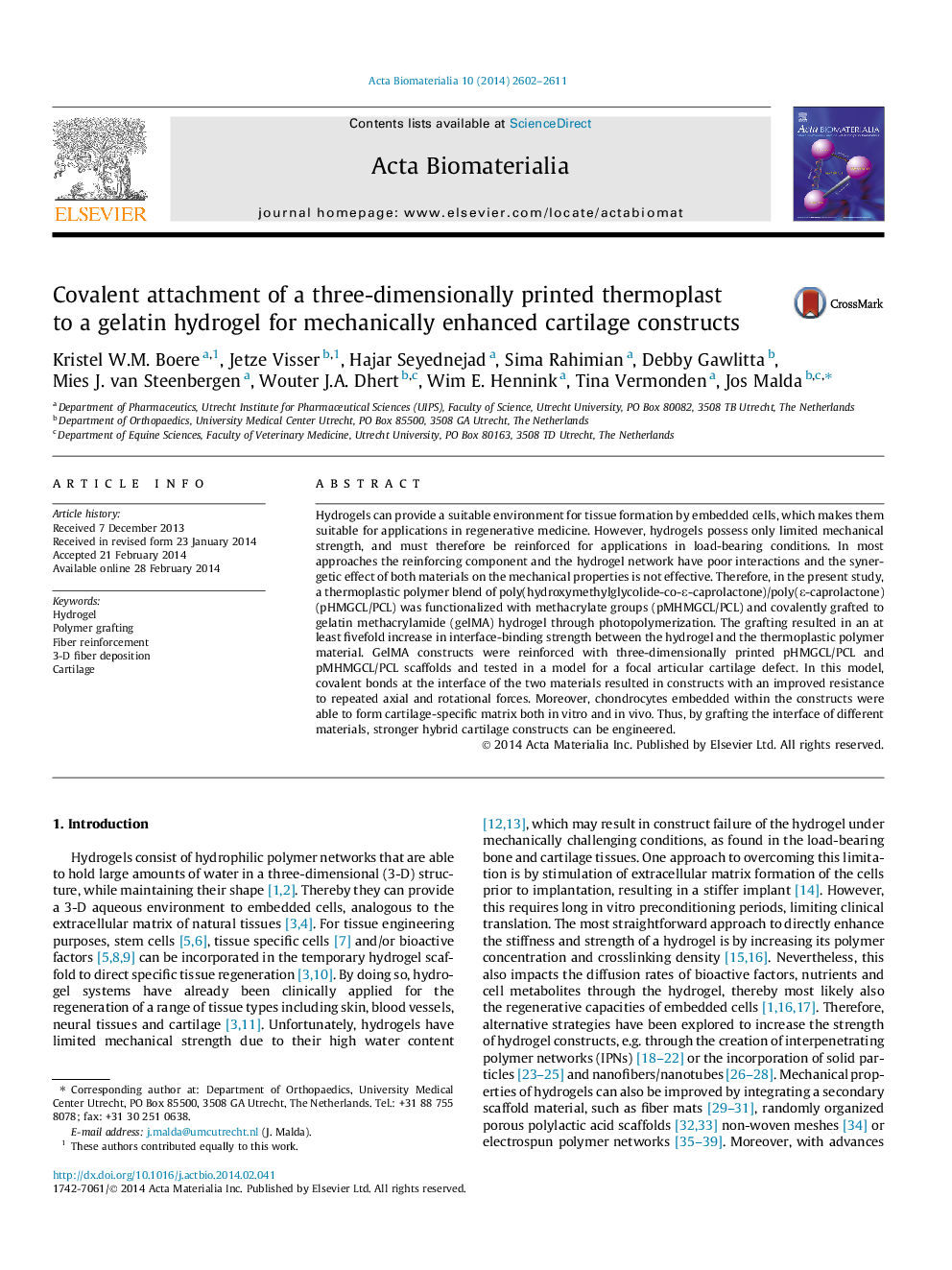| Article ID | Journal | Published Year | Pages | File Type |
|---|---|---|---|---|
| 10159098 | Acta Biomaterialia | 2014 | 10 Pages |
Abstract
Hydrogels can provide a suitable environment for tissue formation by embedded cells, which makes them suitable for applications in regenerative medicine. However, hydrogels possess only limited mechanical strength, and must therefore be reinforced for applications in load-bearing conditions. In most approaches the reinforcing component and the hydrogel network have poor interactions and the synergetic effect of both materials on the mechanical properties is not effective. Therefore, in the present study, a thermoplastic polymer blend of poly(hydroxymethylglycolide-co-ε-caprolactone)/poly(ε-caprolactone) (pHMGCL/PCL) was functionalized with methacrylate groups (pMHMGCL/PCL) and covalently grafted to gelatin methacrylamide (gelMA) hydrogel through photopolymerization. The grafting resulted in an at least fivefold increase in interface-binding strength between the hydrogel and the thermoplastic polymer material. GelMA constructs were reinforced with three-dimensionally printed pHMGCL/PCL and pMHMGCL/PCL scaffolds and tested in a model for a focal articular cartilage defect. In this model, covalent bonds at the interface of the two materials resulted in constructs with an improved resistance to repeated axial and rotational forces. Moreover, chondrocytes embedded within the constructs were able to form cartilage-specific matrix both in vitro and in vivo. Thus, by grafting the interface of different materials, stronger hybrid cartilage constructs can be engineered.
Related Topics
Physical Sciences and Engineering
Chemical Engineering
Bioengineering
Authors
Kristel W.M. Boere, Jetze Visser, Hajar Seyednejad, Sima Rahimian, Debby Gawlitta, Mies J. van Steenbergen, Wouter J.A. Dhert, Wim E. Hennink, Tina Vermonden, Jos Malda,
